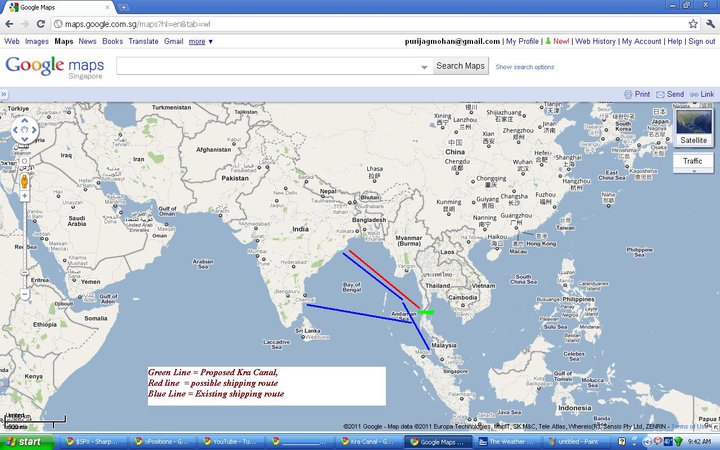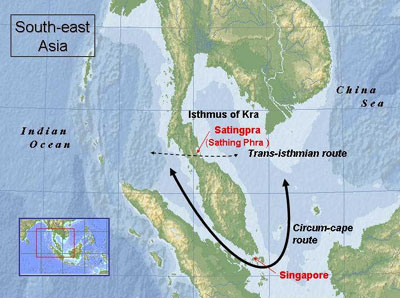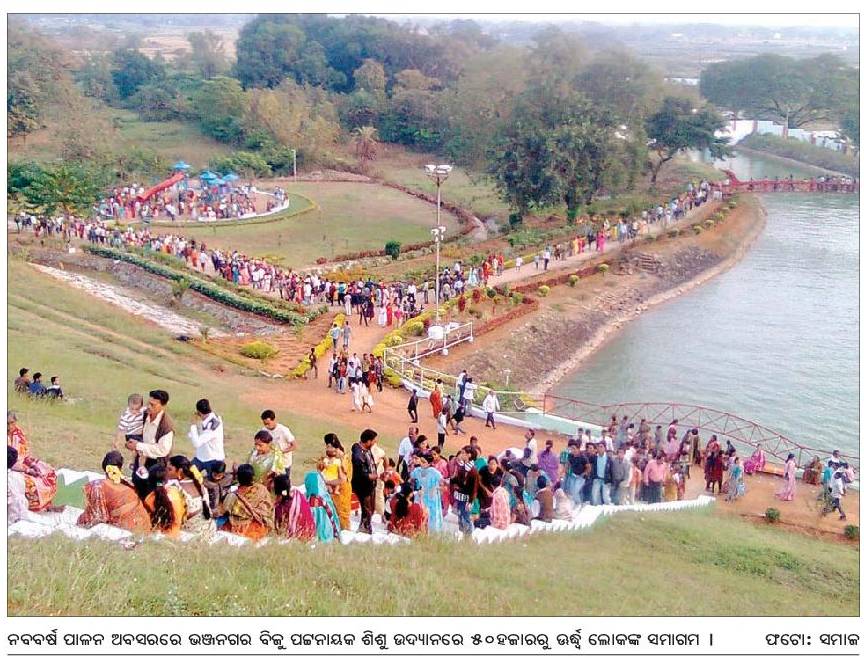POSCO non-approval approval; Odisha government should do the right thing
CENTER & ODISHA, ENVIRONMENT, Jagatsinghpur, POSCO, Steel Comments Off on POSCO non-approval approval; Odisha government should do the right thingUpdate 2: The following excerpt from a report in Telegraph elaborates on the point where this may head to the courts.
Giving conditional clearance to the project, the Union environment and forests ministry had yesterday asked the state for an assurance that no one was so entitled. At stake is the final approval for the diversion of 1,253 hectares of forestland for the steel plant and its captive port.
Jagatsinghpur collector Narayan Jena today argued that no one met the criteria under which they could legitimately stake claim to any part of the forestland. This was challenged by the Posco Pratirodh Sangram Samiti, which is resisting the project.
Under the 2006 law, tribals can claim rights over forestland on which they are currently living or dependent for livelihood. According to the state government, no tribal lives in the project area.
However, the 2006 law also allows Other Traditional Forest Dwellers (OTFDs) to claim forest rights provided they satisfy three criteria. The claimants must:
• Have lived on the forestland for 75 years prior to December 13, 2005;
• Have been in occupation of the land before December 13, 2005;
• Be dependent on the forestland for their “bona fide” livelihood needs.
Collector Jena declined comment on the Union ministry’s riders since the official order is yet to be received, but tried to clear the air on the matter of forest rights.
He said the project area had been notified as protected forest area only in 1961 — so technically, no OTFD could claim to have lived in a “forest” there for 75 years. “Had there been tribals in the area, the situation would have been different. But no OTFD can claim such benefits because its forest status does not go back 75 years,” he said.
He conceded that the area was part of Burdwan estate before 1952, when there were reserve forests in Jatadhari and Bhuyanpal, which are part of the project area. But he insisted that the area was completely uninhabited now.
However, the Union tribal ministry says that claimants under the OTFD category do not have to prove they live on the forestland but only that they depend on it for their “bona fide” livelihood needs.
Jena countered this by alleging that claimants to land in the project area were encroachers, implying their claims about dependence for livelihood would be untenable.
Update: Following is from an editorial in Economic Times. I am in agreement with the observations there.
Environment minister Jairam Ramesh has passed the Posco buck, nominally to the government of Orissa but, in reality, to the courts. His final clearance of the project depends on a categorical assertion by the government of Orissa that there are no ‘other traditional forest dwellers’ among those whose land would be diverted for the project. … Now, if the government of Orissa does provide the Centre with the categorical assertion that it has sought on the nature of the people who would be displaced, it is inevitable that the villagers would go to court.
Whether the affected villagers are indeed people whom the Forest Rights Act seeks to protect is a matter of fact that would then be left to the courts to verify, beyond final challenge in the Supreme Court. This will take time. But a lengthy pilgrimage through the shrines of graded sanctity of Indian legality is not the only future open to Posco. The company can make a fresh, larger-hearted and better funded effort to win over the villagers whose lives and livelihoods would be disrupted by the project than the current one rejected by the villagers. People need certainty about their future incomes and occupations, and these would need to be superior to what they are asked to give up. This would not take much, given how the villagers eke out a living. But it does call for imagination, empathy and a willingness to engage directly with the villagers and not just with political and bureaucratic powerbrokers.
… The state has to show its earnestness. At the same time, companies and their projects must respect, not bend, the people of India and their laws. The Posco decision sets the stage for companies to show how they are inclined.
While the news media is buzz with the conditional approval of POSCO by the environment ministry, the interview with NAC Chairperson NC Saxena elaborates on the nuance behind the approval. While I am not conversant with the detailed aspects of the law here, I hope the Odisha government follows the law of the land to the dot and makes sure that displaced as well as project affected people are adequately and properly compensated. At the same I hope people and groups who blindly oppose this focus their attention towards helping the project affected and displaced people.
Following are excerpts from a CNBC-TV18 interview of NC Saxena which spells out the nuances behind the non-approval approval.
Korean steel giant POSCO has welcomed the conditional approval, which comes three years after the plant was first envisaged. It says it will maintain 25% of the area allocated for the steel plant as green cover. As per the ministry’s conditions, POSCO says it will earmark 2% of its net India profits for its corporate social responsibility drive. It will also work on creating sustainable livelihood options for people affected by the project. POSCO adds that it plans to ensure conservation of land and marine environment at the site. However, member of the National Advisory Council or NAC, NC Saxena has said that the order should not be read as a clearance. Speaking to CNBC-TV18, Saxena said the Orissa government should recognise the rights of the people. The Orissa government’s rehabilitation package is very weak, he said. He however added that the package was not the concern of the Ministry of Environment and Forests.
…Q: Finally a clearance being given to POSCO by the ministry of environment but you and your panel had said that there were several violations of the forest rights act by the Orissa government while the land acquisition had actually taken place. Now if I look at the order that’s been put out by the ministry of environment it clearly says that the final approval for diversion of 1253 hectares of forest land for the POSCO project would be granted as soon as there is an assurance from the state government to the ministry of finance that there is indeed no violation as far as other traditional forest dweller rights are concerned, how are you reading this?
A: Infact I don’t think it can be read as a clearance because if you see the order very carefully it very clearly says that there are conditions to be satisfied. For instance it says that there are 3 conditions. People have to be living there for the last three generations, people have to be in occupation since December 2005 and also they should depend on forest lands. Orissa government’s case was that occupation is also necessary for 3 generations which is not true.
So I am very happy that the minister has clarified that it is only living which is there for 3 generations. Minister has also clarified that these people who are forest dwellers they don’t have to claim their rights, its for the state government to recognize their rights, so therefore Orissa government if it is to stick to its own records would find it very difficult to declare that none of these condition are satisfied and I am sure that people will get justice.
Q: … so then how does one actually progress from here because the riders are going to be very difficult for the Orissa government to comply with?
A: The Orissa government should first of all recognize the rights of these people and grant the rights under the forest rights act, then they can acquire the land under the land acquisition law. I do not know why Orissa government is not willing to talk to the people. The other point is Orissa governments rehabilitation package is very weak.
They recognize rehabilitation only for those who are displaced. It should also recognize those who are affected so therefore a large number of people are losing their livelihoods, their incomes are being affected and they should also be compensated. Once you do that, if my income is Rs 5000 a month and Orissa government says I will give you Rs 10000 I am sure I will be very happy so that’s how Orissa government should deal with resentment.
Q: … this doesn’t really spell out what more needs to be done to strengthen the rehabilitation package?
A: Rehabilitation package is not the concern of the Ministry of Environment and Forest and therefore the minister has rightly not dealt with that issue but that is certainly an issue which the Orissa government and also the Ministry of Tribal affairs should be concerned with.
The ministries concern, the MoEF’s concern was only with the forest conservation act and the environmental protection act and therefore they have not commented but of you read Meena Gupta’s report and also the 3 members report they have dealt with this question in great detail and they have suggested how to strengthen and augment the whole rehabilitation package.
Q: … hence the uncertainty continues?
A: Infact yes I would say that uncertainty does not continue. Orissa government has been given a very clear order and they should comply with it …
So Orissa government should go ahead recognize their forest rights and then only think of further action. So therefore I think a very clear order has been given and it can be complied with. The project can also be completed provided Orissa government has a good rehabilitation package and observes all the laws specially the Forest Rights Act.



